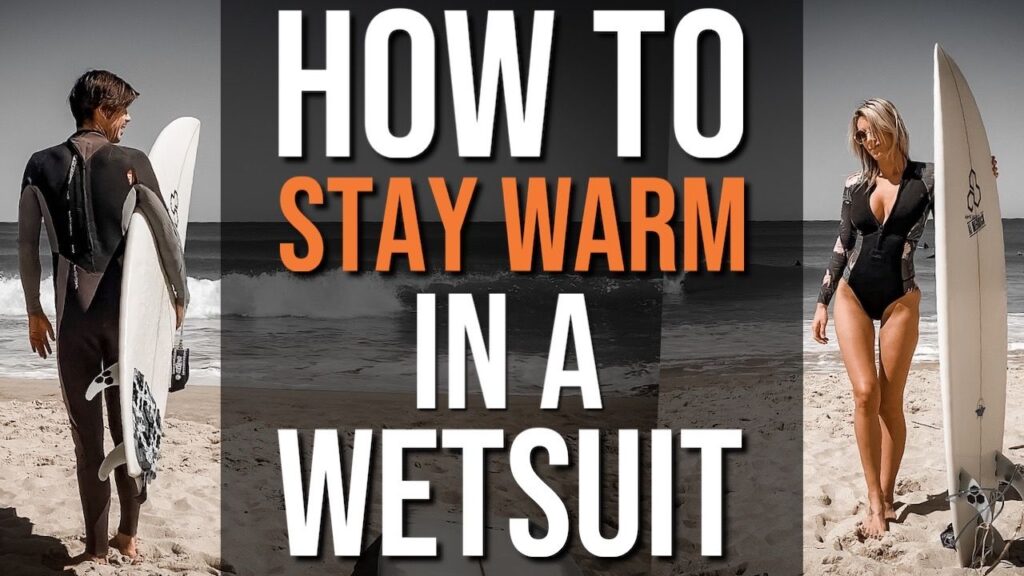Wetsuits are a great way to keep your body warm in cold temperatures but sometimes even with a good wetsuit you can still get extremely cold in the water.
Getting cold doesn't feel nice and it sucks when you have to cut your surf or your scuba dive short because you're too cold. So how can you stay warmer in a wetsuit?
There are actually quite a few things you can do to stay warm in your wetsuit.
To stay warm in your wetsuit make sure your wetsuit fits tight and is the right thickness. Pour warm water into your wetsuit before entering the cold water or wee in your wetsuit once in the water. Move around to stay warm and consider booties, gloves, a hoodie or an insulated vest to keep you warmer.
Most Important: Get a Tight Fitting Wetsuit

Hands down the most important thing to get right if you want to stay warm in your wetsuit is to get a wetsuit that fits correctly.
Wetsuits stretch when they get wet and overtime they stretch and end up larger and looser than they are in the store.
The mistake most people make is buying a wetsuit that is too loose and too large. This leads to the dreaded “flush” where cold water is constantly entering into your wetsuit flushing out the warm water and making you colder.
A thinner good fitting wetsuit will let in less water and thus keep you a lot warmer than a thicker loose fitting wetsuit.
Below is a helpful guide on how to pick the right size wetsuit for you. But you'll need to head into a store and try a few on to try and find the best fit for you.
Also Important: Get The Right Wetsuit Thickness and Length
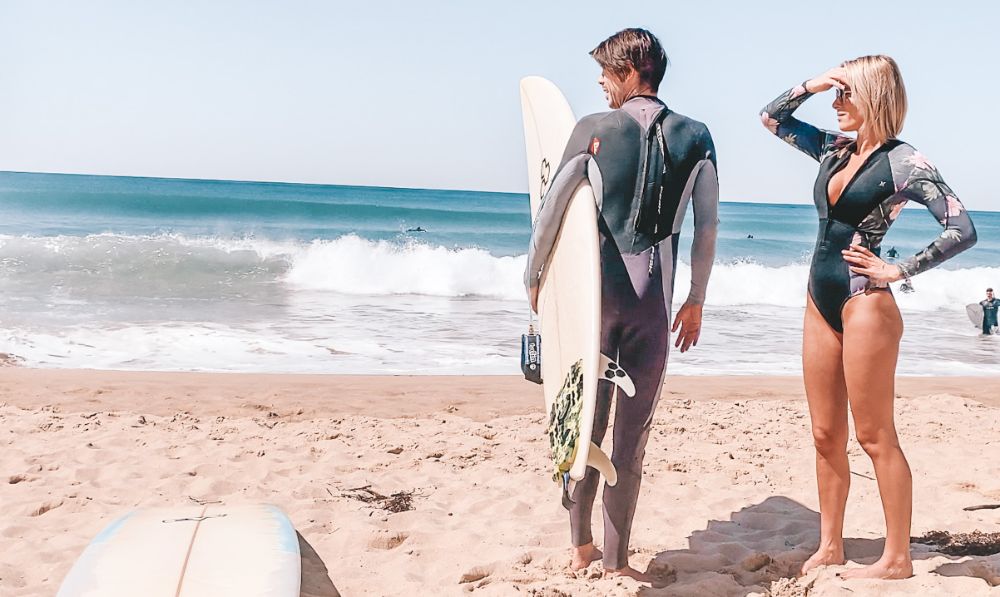
Assuming you've got the fit right then thickness is the next most important thing.
Wetsuits are made of neoprene foam, which is a rubber with tiny nitrogen bubbles in it that insulate your warm body against the cold water.
The thicker your wetsuit the warmer it will be.
Wetsuits start at around 1mm in thickness and come in short sleeves or vests for warm summer water. For colder water you can get full length wetsuits that go up to 5mm in thickness for cold water surfing or up to 7mm in thickness for extremely cold water diving.
Surfing wetsuits and scuba wetsuits are also different in their thicknesses. Surfing wetsuits are made to have more mobility in the arms and scuba wetsuits have more pressure resistant neoprene. So make sure you're buying the right type for the activity you do.
Talking about the right thickness would take an entire article, but here is a handy quick guide to get your started.
| Water Temp Range ºF (ºC) | Wetsuit Thickness | Recommended Wetsuit Type | Seal Type |
|---|---|---|---|
| >72ºF (>22ºC) | N/A | Rashguard | N/A |
| 65-75ºF (18-24ºC) | 0.5 – 2/1 mm | Top / Spring Suit / Shorty / Short John | N/A |
| 62-68ºF (16-20ºC) | 2 – 3/2 mm | Spring Suit / Steamer (Full Suit) | Flatlock |
| 58-63ºF (14-17ºC) | 3/2 – 4/3 mm | Steamer, Boots | Sealed |
| 52-58ºF (11-14ºC) | 4/3 – 5/4/3 mm | Steamer, Boots, Gloves, Hood | Sealed + Taped |
| 43-52ºF (6-11ºC) | 5/4 – 5/4/3 mm | Steamer, Boots, Gloves, Hood | Sealed + Taped |
| <42ºF (<6ºC) | 6/5 – 7 mm | Steamer, Boots, 3 Finger Gloves, Hood | Sealed + Taped |
Assuming You Have a Good Wetsuit, How Can You Stay Warmer In It?
So let's assume you've got a good fitting wetsuit in the right thickness for the water temperature you're surfing or diving in.
What are some ways you can keep warmer in your wetsuit so you can stay out longer or just not feel the cold as much.
A lot of these have to do with building up your “heat bank” prior to getting into the water, or keeping your heat bank high once in the water.
Pour Warm Water Into Your Wetsuit
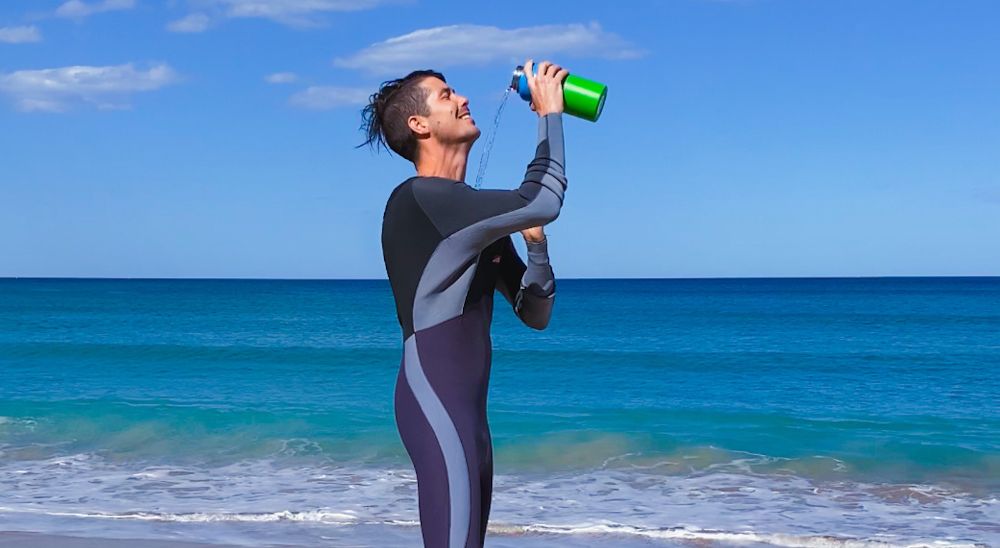
Wetsuits are designed to let in a thin layer of water which your body then fairly easily heats up.
But when you first go into cold water your wetsuit will fill up with freezing cold water that your body then needs to use energy to heat before it'll keep you warm.
On a cold day it's a good idea to pre-fill your wetsuit with warm water.
Heat up some water at home and fill up a vacuum insulated water bottle like a Hydro Flask or something similar. Not so hot it'll burn your skin but nice and toasty warm.
Put on your wetsuit and pour the warm water into your wetsuit through the next. If you've got a buddy diving or surfing with you get them to pour some in through the back of your wetsuit and zip you up.
You can also use a cooler full of warm water to presoak your booties, gloves and hood in warm water before you put them on.
Put Your Wetsuit On A While Before You Enter The Water

Wetsuits don't have to be wet to keep you warm. In fact a dry wetsuit will actually keep you warmer than a wet one.
It's the neoprene foam that acts as an insulator and traps in your body heat, making you hot.
Putting on your wetsuit a while before hopping in the water can actually build up a lot of heat and get you sweating.
When you finally jump in the water the cool water can actually be a relief from how hot you've become.
Getting changed in the car or somewhere inside, warm and out of the wind will stop you from losing a lot of body heat as you change into your wetsuit.
While it can be a bit of a circus trick to get into a wetsuit in the car, especially if you've got friends trying to do the same thing, it can keep you a lot warmer and give you extra time in the water before you get too cold to keep going.
Wee In Your Wetsuit (Known as a ‘Wetsuit Warmer')
When in the water your wetsuit will constantly slowly fill up with cold water that is then heated by your body and the hot water flushes out.
One way to prime your wetsuit and keep you warmer is to wee inside your wetsuit (usually once you're already in the water…otherwise yuck).
Your wee is the same temperature as your body so doesn't need to be warmed up by your body and when contrasted with the cold water that might already be in your wetsuit it can feel extremely warm.
This won't keep you warm for an extended period of time, but it can often be a nice little relief from the cold water that otherwise fills your wetsuit.
Eventually your ‘wetsuit warmer' will be washed out of your wetsuit so it's not like you'll be swimming in your own wee for an extended period of time.
Wear An Insulated Rash Vest Under Your Wetsuit

While having the right thickness wetsuit for the water temperature is ideal sometimes you don't want to spend the money on an extra wetsuit right away and you need to stretch out how long you can wear your thinner wetsuit.
In this case wearing a thinner insulated layer under your wetsuit can help you stay that little bit warmer.
A 0.5mm-1mm thickness insulated rash vest can make a huge difference in keeping your core warm so you don't feel as cold.
There are a lot of great products out there and some are specifically designed to go underneath wetsuits to keep you warmer and cut wind chill (which wetsuits don't always do). Lavacore is one of the most recommended brands and you can check out the different Lavacore products here at Amazon.
Consider a Wetsuit Hoodie, Booties and Gloves

In a wetsuit your hands, feet and head are all going to be fully exposed to the cold water and the elements.
This is also the main place cold water will get into your wetsuit, flushing out the hot water and making you colder and colder over time.
Adding booties, a hoodie and gloves can be a great way to both protect those parts of your body from the cold but also give your wetsuit a better seal, letting in less cold outside water.
This combined can keep you A LOT warmer in the water, even with the same thickness wetsuit.
Move Around To Increase Your Body Temperature

You know how on a cold day you can go from a run if you're cold to warm up your body temperature?
Well the same is true in the water. If you're just sitting there not really moving then your body is going to get cold.
But moving around, whether it be paddling, swimming or surfing can heat up your internal temperature and make you less cold.
Ride a Larger Surfboard

Water saps heat away from your body 32 times faster than air does. So assuming it's not a day with extreme wind chill then getting up and out of the water will keep you warmer than being in the water.
A larger and my buoyant board will keep you up out of the water more and can stop you getting as cold in your wetsuit.
Stay In The Sun
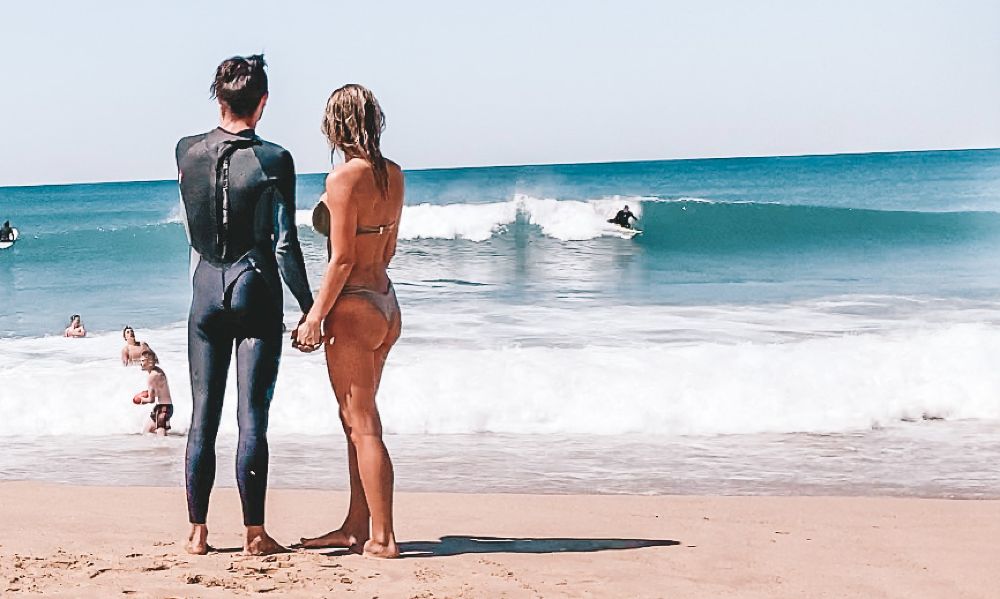
Wetsuits are designed to be black for multiple reasons. One reason being the black absorbs heat from the sun warming up the wetsuit and then warming up your body too.
This isn't always something you have control over, especially on a cloudy day, and usually when you're in the water there is no protection from the sun when it's shining anyway.
But once you're out of the water if you're staying in your wetsuit stay in the sun and it'll warm you up faster than if you stay in the shade.
Use Some Reusable Heat Packs
Reusable heat packs are small, squishy and can easily fit inside a wetsuit to help keep your core warm.
They are made from non-toxic materials (sodium acetate, which is added onto salt and vinegar chips) so if they break inside your wetsuit it's not the end of the world.
They have a metal clicker inside which activates the heat pack and warms it up to approximately 140ºF (60ºC), or about the temperature of a hot cup of coffee.
For this reason you shouldn't have them sitting against bare skin or they may burn you. Some people wrap them in rash suit material for this reason.
Some people swear by these and love them while other says they don't work at all. I personally haven't tried them but I feel they would work a little bit but not a great deal.
You can even get kidney belts with these reusable instant heat packs designed specifically for people in wetsuits.
If you're looking for something to help keep you warm these might be worth a try.
Click here to see some affordable reusable instant heat packs at Amazon
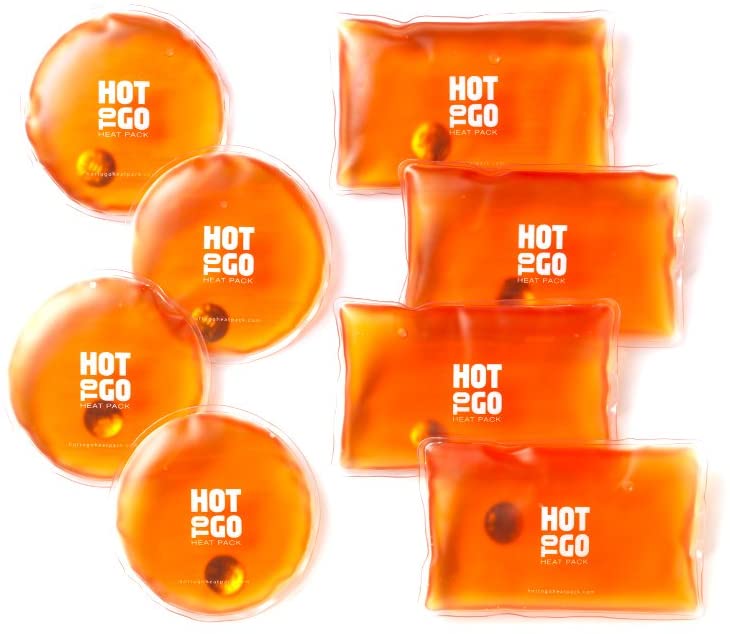
Use a Battery Powered Heat Vest
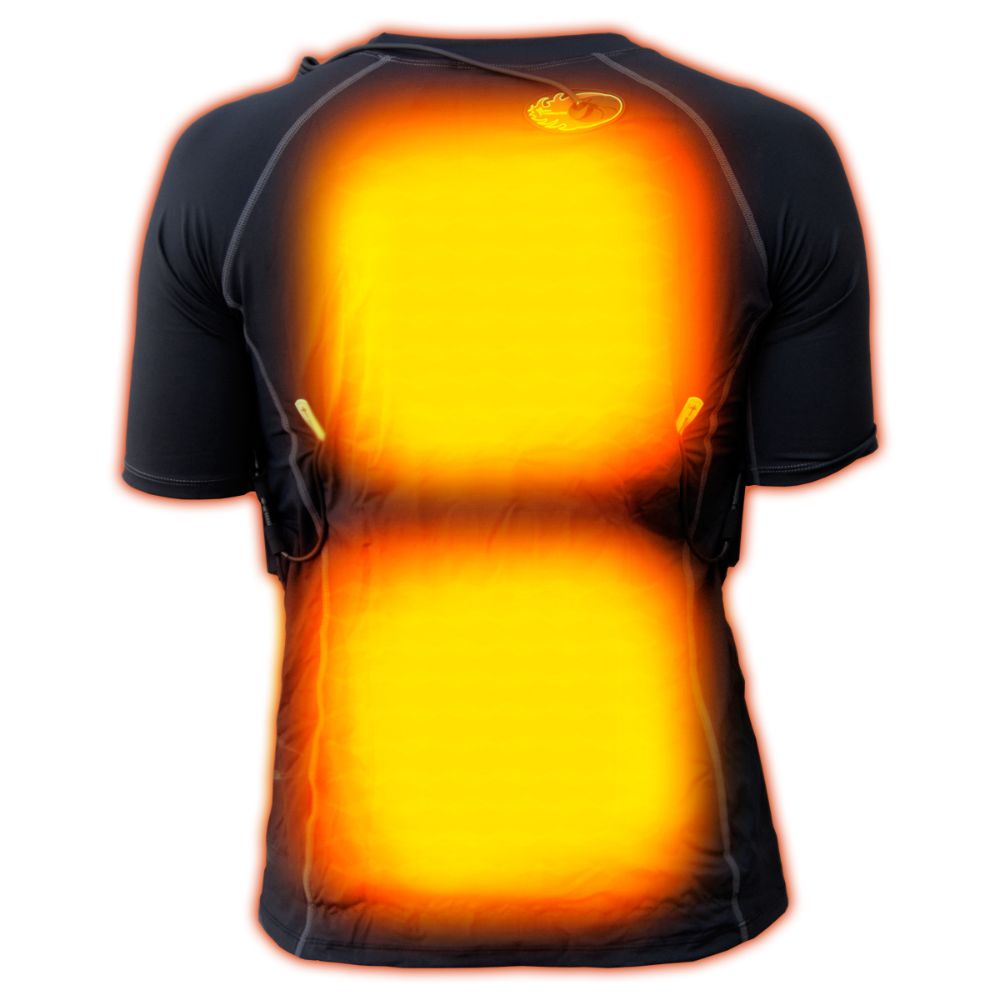
For those going into extremely cold water or doing deep dives where your body heat can be sapped quickly there are now battery powered heat vests you can wear under your wetsuit.
These heat vests emit infrared heat which can get through your skin and more readily heat up the inside of your body.
Infrared heat is used in saunas and it's the heat that comes from the sun to warm the earth so it should be safe to use.
These heating vests are expensive and really only worth it if you're wearing your wetsuit into extremely cold water.
For most people a thicker wetsuit to better suit the season will be a better buy, but if you're already wearing the thickest suit possible then these may be your best option.

